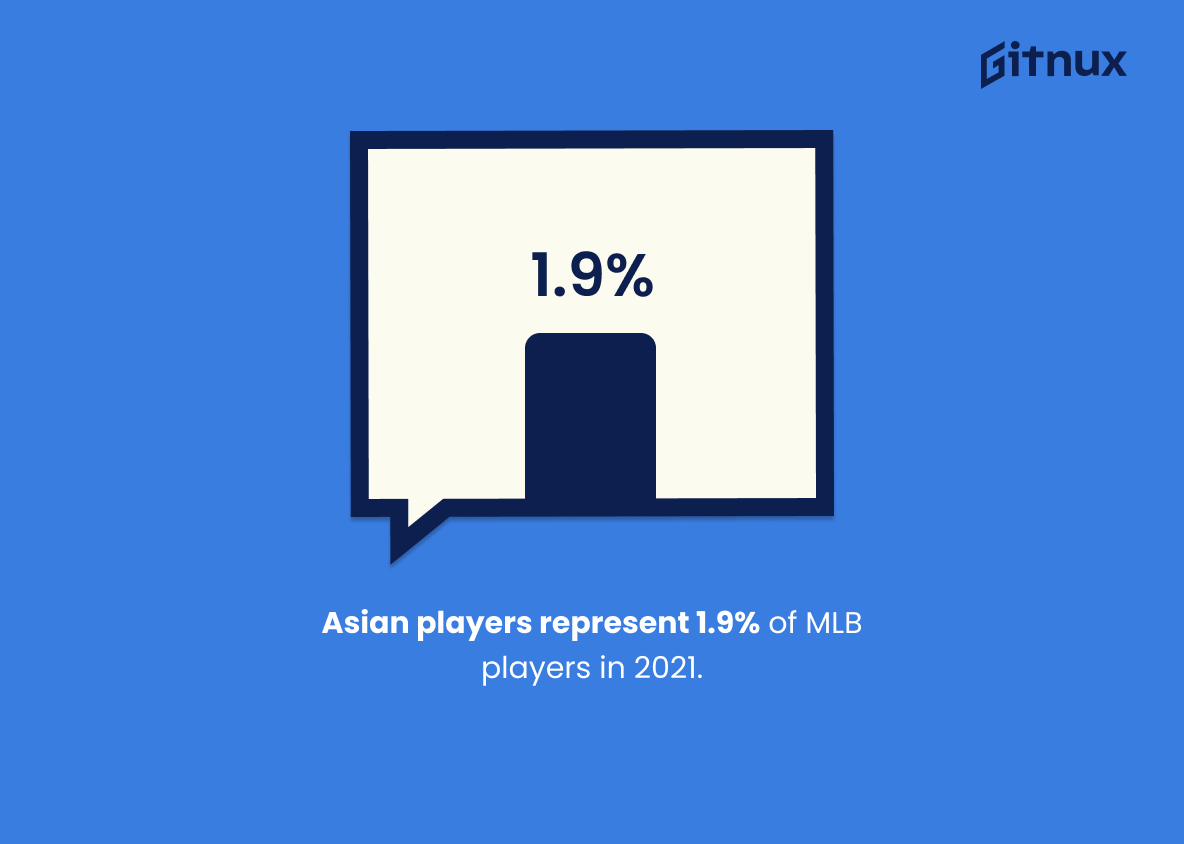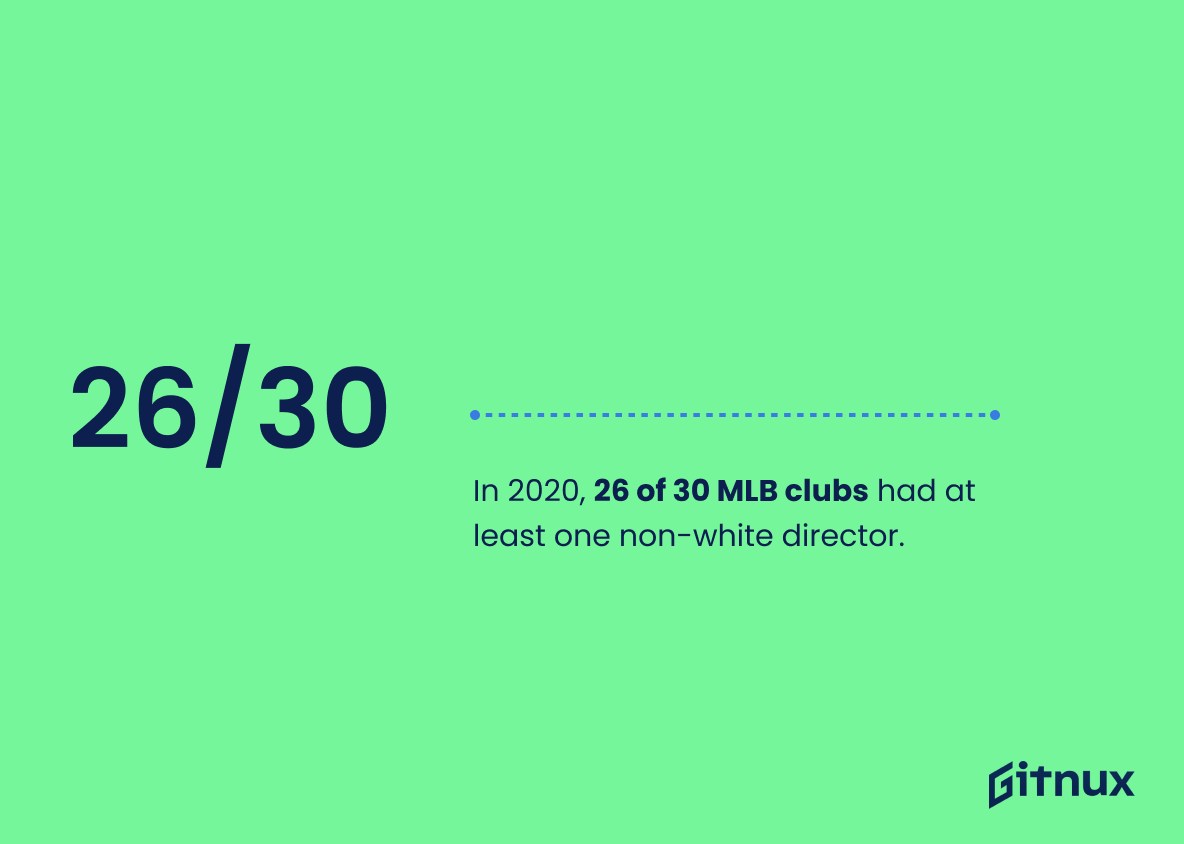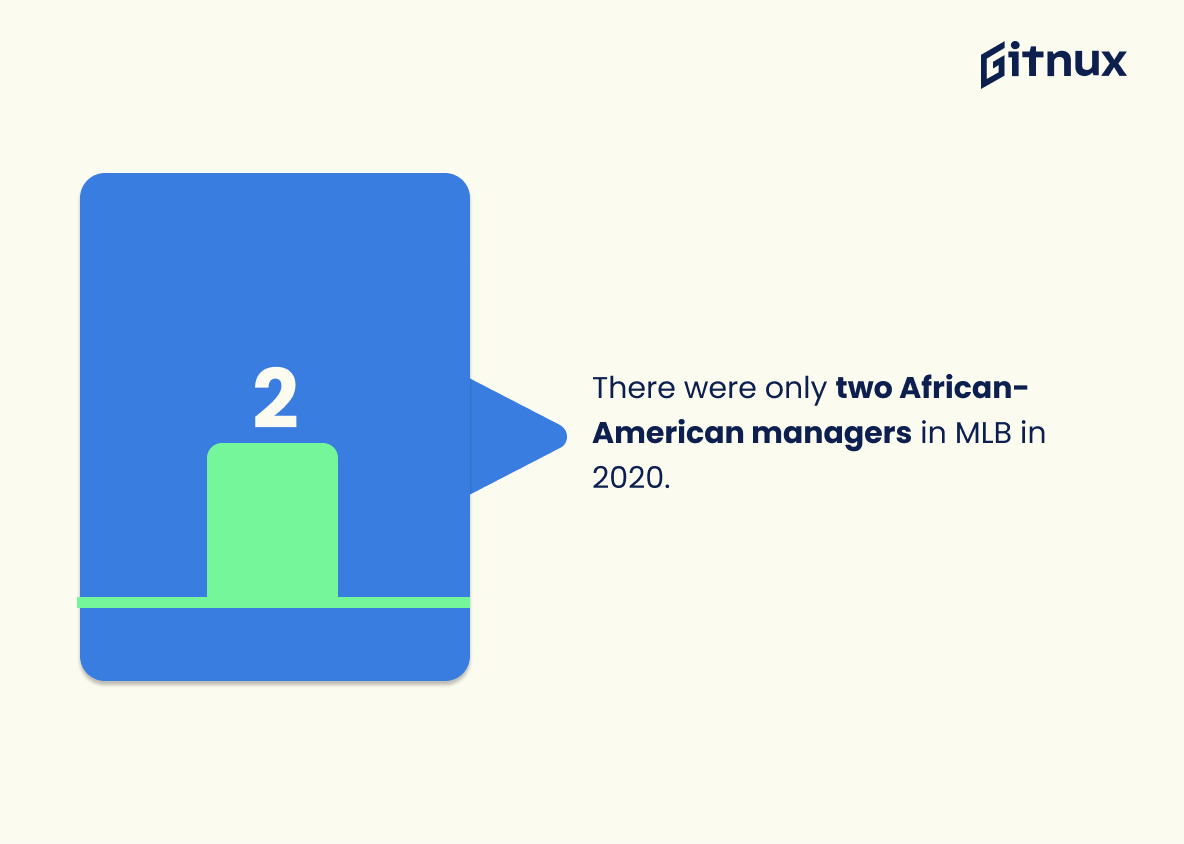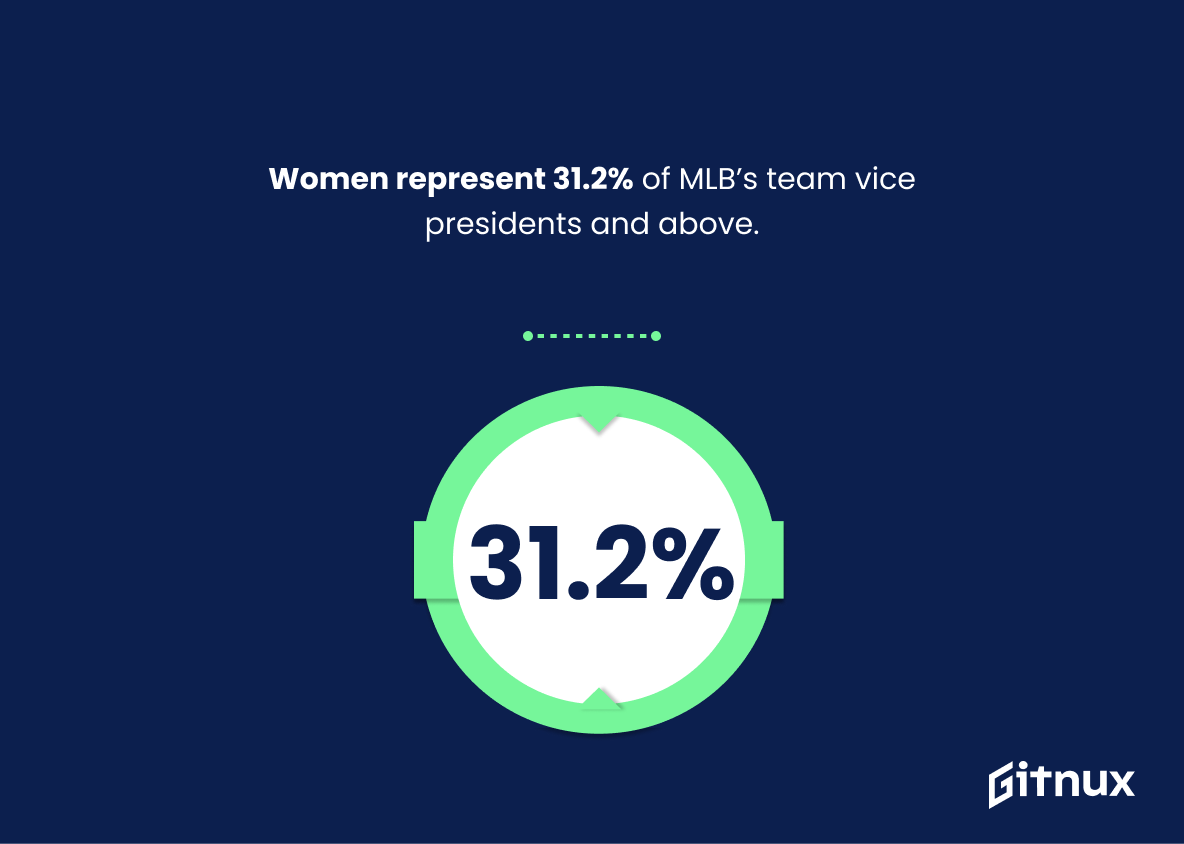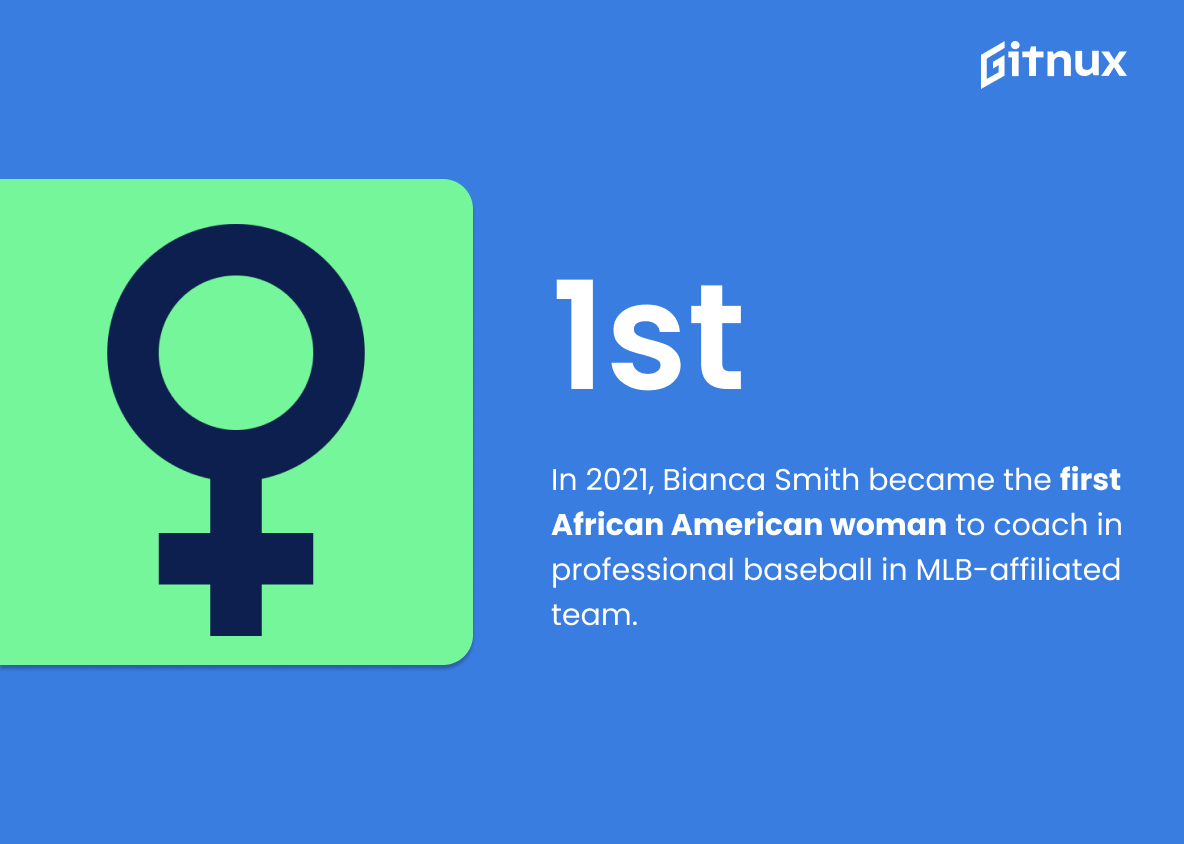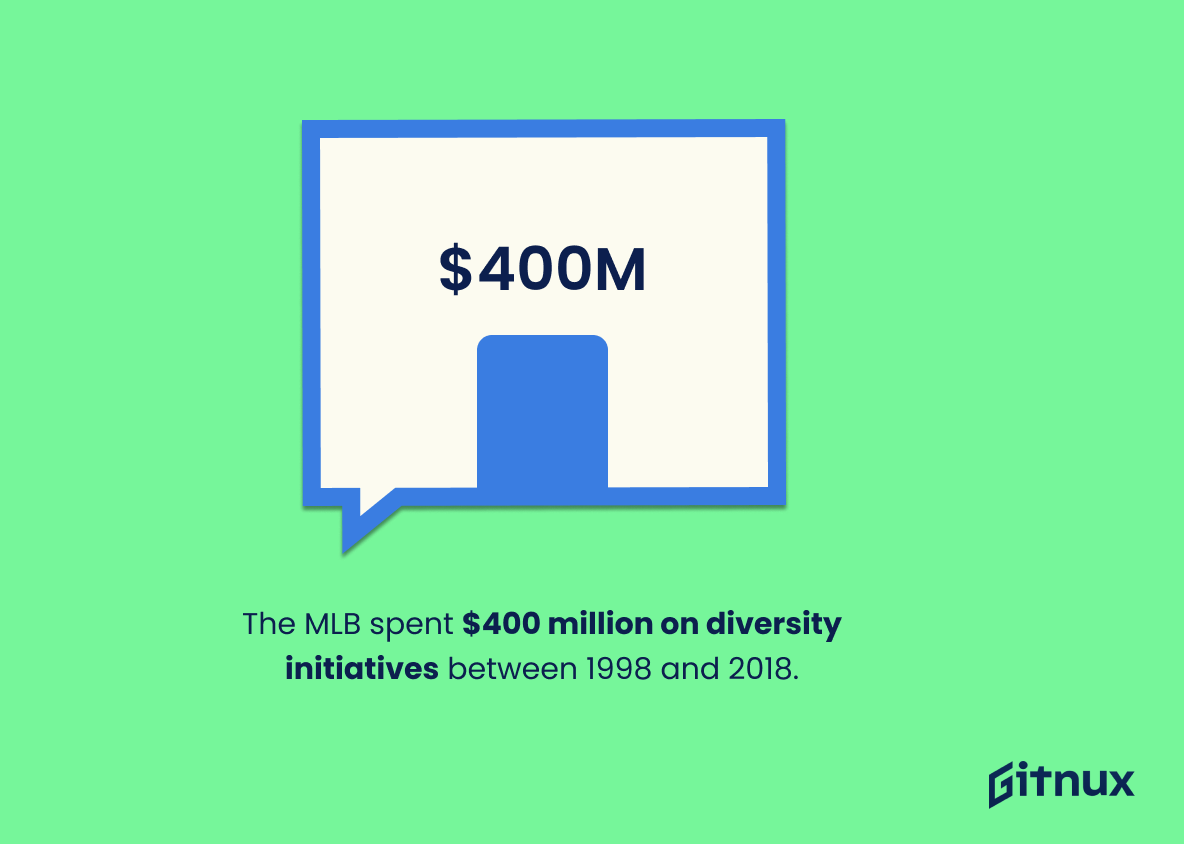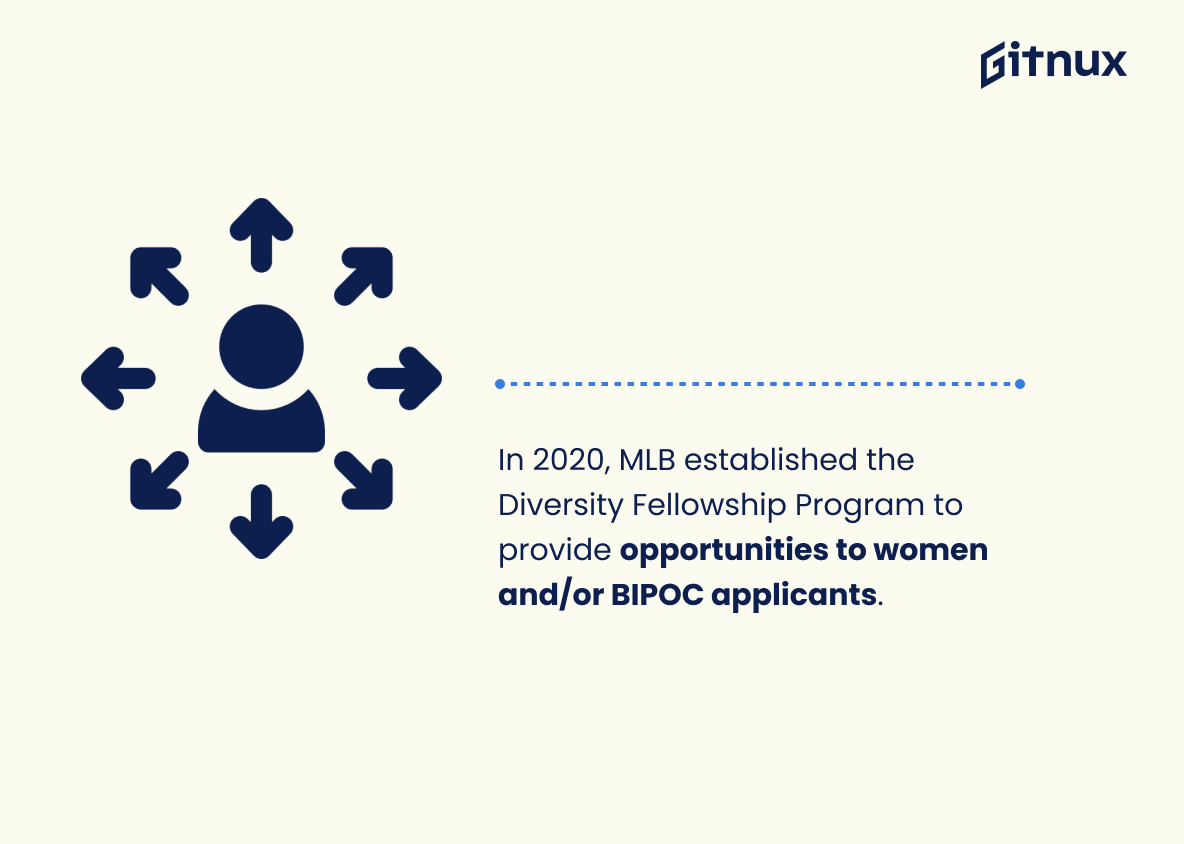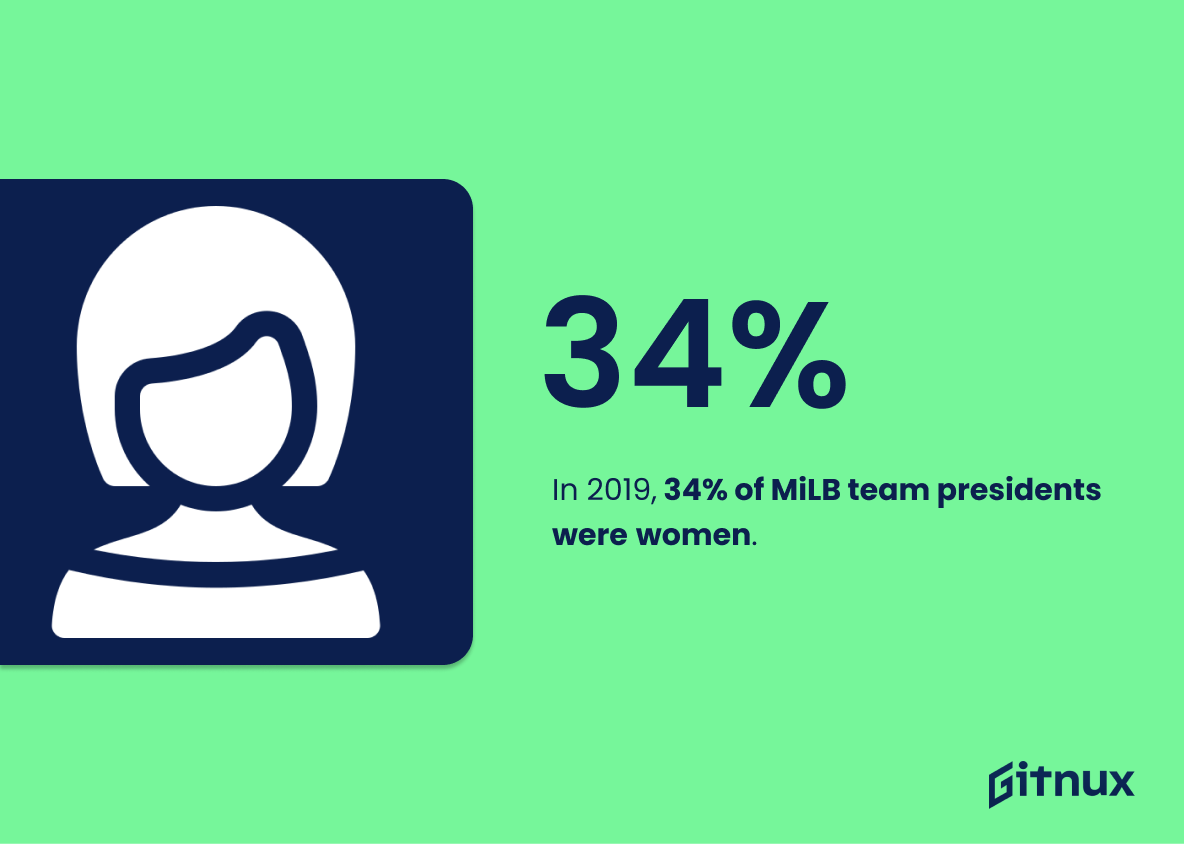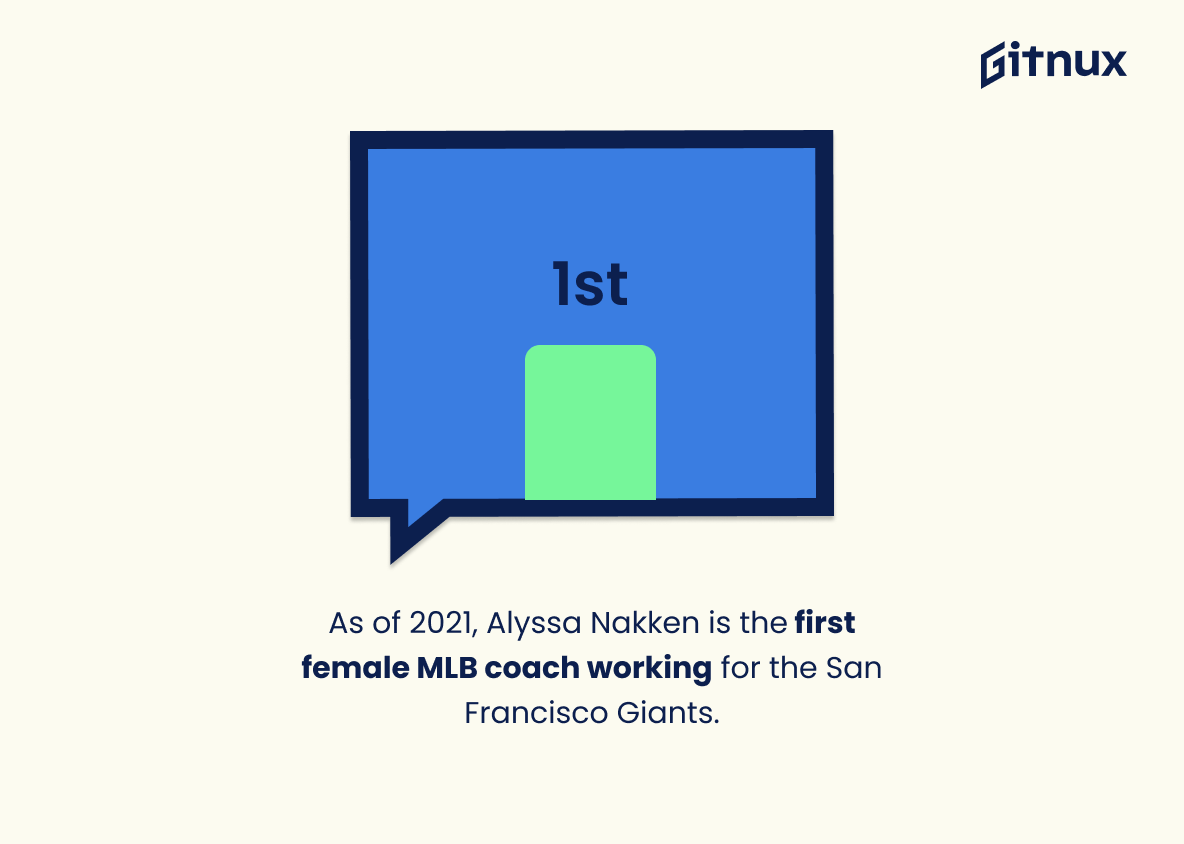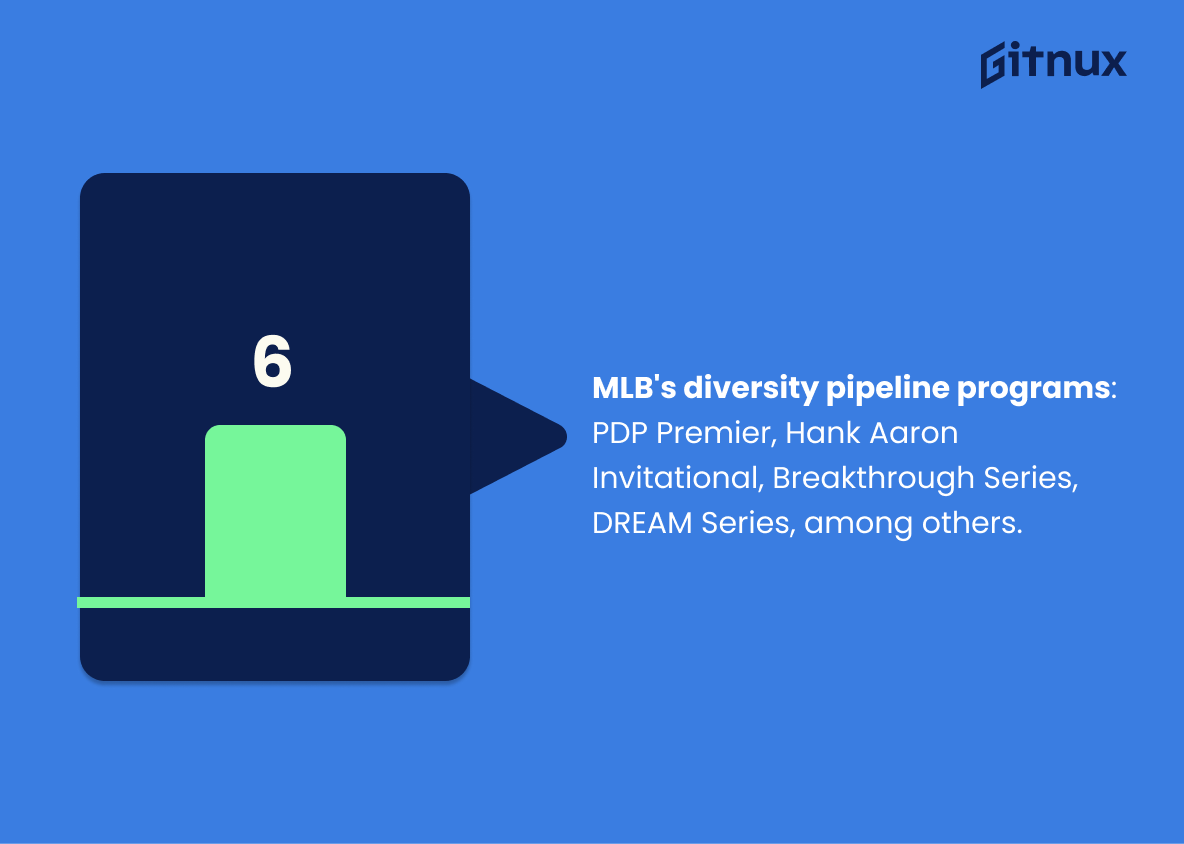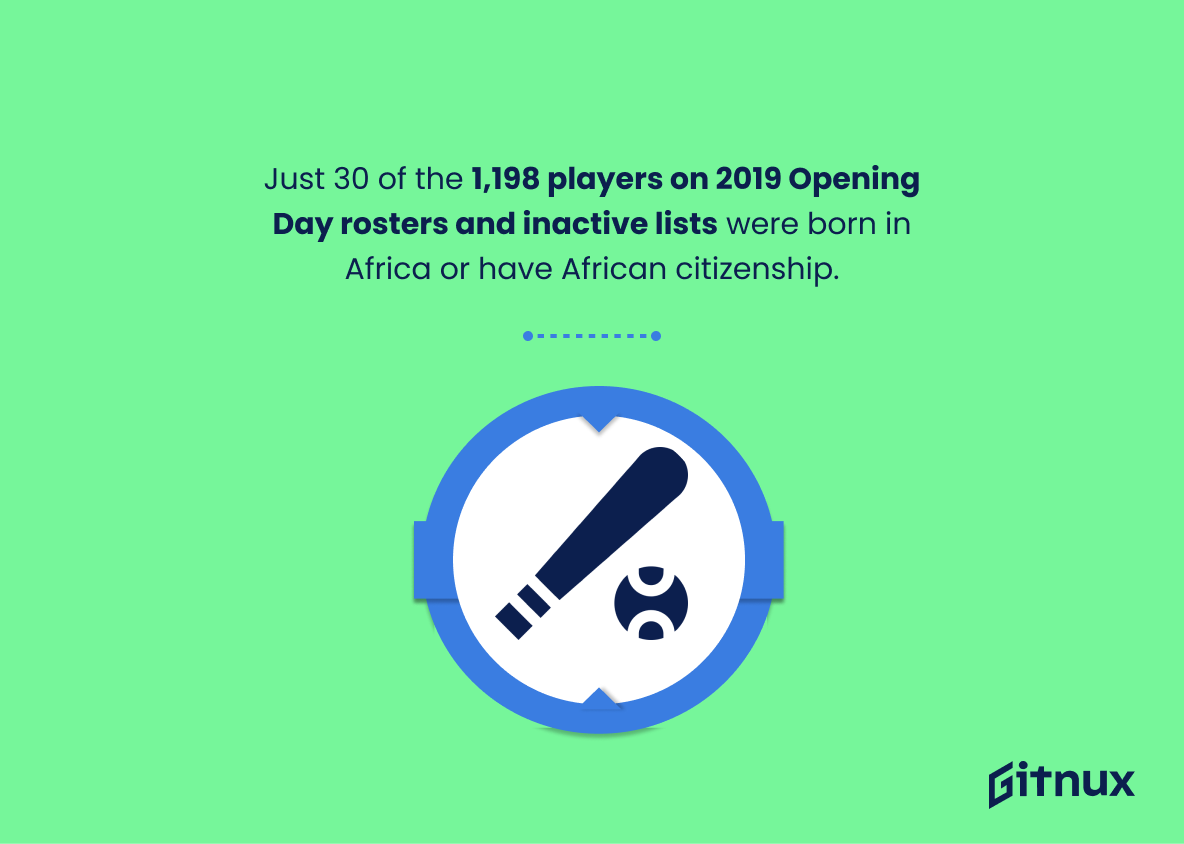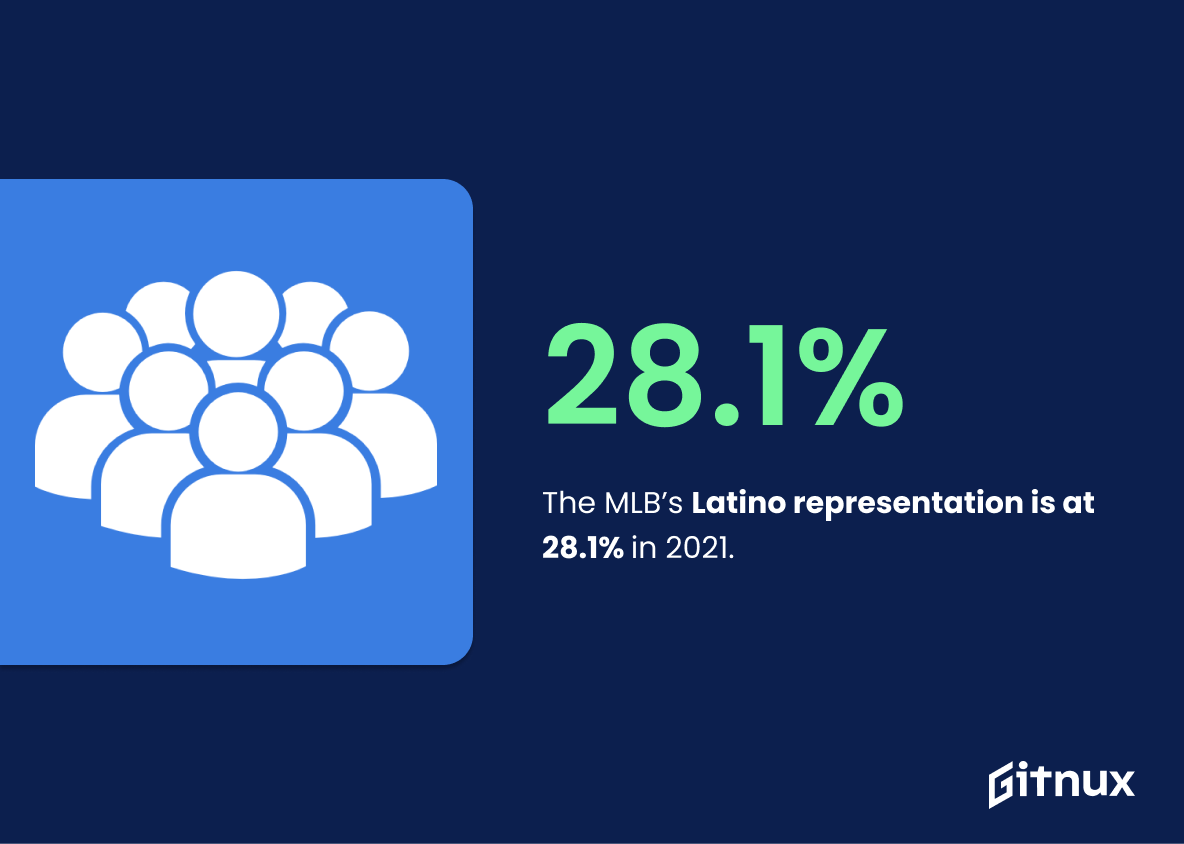As Major League Baseball (MLB) continues to strive for greater diversity and inclusion, it is important to take a look at the current statistics. This blog post will explore MLB’s progress in terms of its representation of African American players, people of color, Latinos, Asians, non-white CEOs and directors as well as female coaches and executives. Additionally we’ll examine initiatives such as the Diversity Fellowship Program and Diverse Business Partners program that have been implemented by MLB over recent years. Finally we’ll discuss some other interesting facts about baseball’s efforts towards increasing diversity within their organization. By looking at these numbers closely we can gain insight into how far MLB has come in promoting an inclusive environment for all players regardless of race or gender identity.
Mlb Diversity Statistics Overview
The MLB’s Latino representation is at 28.1% in 2021.
This statistic is a testament to the MLB’s commitment to diversity and inclusion. It shows that the league is making strides towards creating a more equitable playing field for all players, regardless of their background. This is especially important in a sport that has historically been dominated by white players. The 28.1% Latino representation in 2021 is a significant increase from the 19.8% in 2019, and it is a sign that the MLB is taking steps to ensure that all players have an equal opportunity to succeed.
Asian players represent 1.9% of MLB players in 2021.
This statistic is a stark reminder of the lack of diversity in Major League Baseball. With only 1.9% of players being Asian, it is clear that MLB has a long way to go in terms of creating a more inclusive environment. This statistic serves as a call to action for MLB to take steps to increase the representation of Asian players in the league.
In 2020, 26 of 30 MLB clubs had at least one non-white director.
This statistic is a testament to the progress that has been made in the MLB in terms of diversity. It shows that the league is taking steps to ensure that all voices are heard and that everyone is represented in the decision-making process. This is an important step in creating a more inclusive and equitable environment for all.
There were only two African-American managers in MLB in 2020.
This statistic is a stark reminder of the lack of diversity in MLB management. It highlights the need for more African-American representation in the league, as well as the need for more opportunities for African-American managers to be hired and promoted. This statistic is a call to action for MLB to take steps to increase diversity in its management ranks.
Women represent 31.2% of MLB’s team vice presidents and above.
This statistic is a testament to the progress that MLB has made in terms of gender diversity. It shows that the league is taking steps to ensure that women are represented in leadership roles, which is an important step in creating a more equitable and inclusive environment. This statistic is a positive sign that MLB is committed to creating a more diverse and inclusive workplace.
In 2021, Bianca Smith became the first African American woman to coach in professional baseball in MLB-affiliated team.
This statistic is a powerful reminder of the progress that has been made in terms of diversity in Major League Baseball. It is a testament to the hard work and dedication of Bianca Smith, as well as the MLB’s commitment to creating a more inclusive environment. This milestone is a significant step forward in the effort to make the sport more accessible to all, and it serves as an inspiration to those who have been historically underrepresented in the sport.
The MLB spent $400 million on diversity initiatives between 1998 and 2018
This statistic is a testament to the MLB’s commitment to diversity initiatives over the past two decades. It shows that the MLB has been actively investing in programs and initiatives to promote diversity and inclusion in the sport. This investment has had a positive impact on the league, as it has helped to create a more diverse and inclusive environment for players, coaches, and fans alike. The MLB’s investment in diversity initiatives is a clear indication of its commitment to creating a more equitable and inclusive environment for all.
In 2020, the MLB established the Diversity Fellowship Program, providing opportunities to women and/or BIPOC (Black, Indigenous, and People of Color) applicants.
This statistic is a testament to the MLB’s commitment to fostering a more diverse and inclusive environment. By establishing the Diversity Fellowship Program, the MLB is taking a proactive step towards creating a more equitable playing field for women and BIPOC applicants. This initiative is a powerful example of the MLB’s dedication to promoting diversity and inclusion in the sport, and it is a crucial step towards creating a more equitable and inclusive baseball landscape.
As of 2019, only 13% of scouts in Major League Baseball are African American.
This statistic is a stark reminder of the lack of diversity in Major League Baseball. It highlights the fact that African Americans are significantly underrepresented in the scouting ranks of the MLB, despite making up a large portion of the overall population. This lack of representation is concerning, as it could lead to a lack of opportunity for African American players to make it to the major leagues. It is important to recognize this disparity and work to create a more equitable and inclusive environment in the MLB.
MLB’s diversity and inclusion department launched a ‘Diverse Business Partners’ program that invested over $2 billion with diverse-owned businesses since 1998
The ‘Diverse Business Partners’ program is a testament to MLB’s commitment to diversity and inclusion, demonstrating that the organization is willing to invest in diverse-owned businesses. This investment of over $2 billion since 1998 is a clear indication that MLB is actively working to create a more equitable and inclusive environment.
In 2019, 34% of MiLB team presidents were women.
This statistic is a testament to the progress that has been made in terms of gender diversity in the MLB. It shows that women are increasingly being given the opportunity to take on leadership roles in the league, which is a positive step forward in terms of creating a more inclusive environment.
As of 2021, Alyssa Nakken is the first female MLB coach working for the San Francisco Giants.
This statistic is a powerful reminder of the progress that has been made in terms of MLB diversity. Alyssa Nakken’s appointment as the first female MLB coach for the San Francisco Giants is a milestone that should be celebrated, as it demonstrates the league’s commitment to creating a more inclusive environment. This is an important step forward in the effort to make MLB a more diverse and equitable sport.
In 2019, the MLB celebrated the inaugural “Lou Gehrig Day” to raise awareness for the rare disease community.
This statistic is a testament to the MLB’s commitment to promoting diversity and inclusion. By celebrating the inaugural “Lou Gehrig Day” to raise awareness for the rare disease community, the MLB is demonstrating its dedication to recognizing and supporting individuals from all walks of life. This is an important step in the right direction for the MLB, and it speaks volumes about the organization’s commitment to diversity and inclusion.
MLB’s six diversity pipeline program initiatives include the PDP Premier, Hank Aaron Invitational, Breakthrough Series, DREAM Series, Trailblazer Series, and EDI
The statistic of MLB’s six diversity pipeline program initiatives is a testament to the league’s commitment to fostering a more diverse and inclusive environment. These initiatives provide a platform for underrepresented groups to gain access to the sport, and to develop their skills and knowledge in order to become successful players and coaches. By investing in these programs, MLB is demonstrating its dedication to creating a more equitable and diverse baseball landscape.
Just 30 of the 1,198 players on 2019 Opening Day rosters and inactive lists were born in Africa or have African citizenship.
This statistic serves as a stark reminder of the lack of African representation in Major League Baseball. With only 30 players out of 1,198, it is clear that MLB has a long way to go in terms of diversifying its rosters. This is especially concerning given the immense talent that exists in African countries.
In 2020, 40.1% of MLB front-office employees identified as female.
This statistic is a testament to the progress that has been made in the MLB when it comes to diversity and inclusion. It shows that the league is taking steps to ensure that all voices are heard and that everyone has an equal opportunity to contribute to the success of the organization. This statistic is a positive sign that the MLB is committed to creating a more equitable and diverse workplace.
Conclusion
Despite the MLB’s efforts to increase diversity and inclusion, there is still a long way to go. African American players make up 7.7% of rosters in 2021, while Latino representation stands at 28.1%. Asian players represent 1.9%, with only one non-white CEO across all teams (Derek Jeter). In 2020, 38.9% of draftees were minorities and 26 out of 30 clubs had at least one non-white director; however, there were only two African-American managers that year and 13% of scouts are African American as well. Women represent 31.2% of team vice presidents or higher positions but just 34% MiLB team presidents are female – Alyssa Nakken being the first woman coach for an MLB affiliated team in 2021 – while 40 percent identify as such within front office roles overall . The MLB has invested over $400 million on initiatives since 1998 including their ‘Diverse Business Partners’ program which spent over $2 billion with diverse owned businesses by 2019; they also launched a Diversity Fellowship Program providing opportunities to women/BIPOC applicants last year alongside celebrating Lou Gehrig Day raising awareness for rare diseases in 2019 too.. Despite these positive steps forward it is clear more needs to be done if true equality is ever going to be achieved throughout Major League Baseball
References
0. – https://www.sportsepreneur.com
1. – https://www.nationalreview.com
2. – https://www.mlb.com
3. – https://www.thesportsdaily.com
4. – https://www.diversityinc.com
5. – https://www.sfgate.com
6. – https://www.cnn.com
7. – https://www.edition.cnn.com
8. – https://www.usatoday.com
